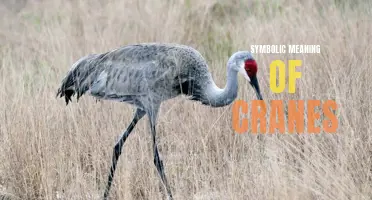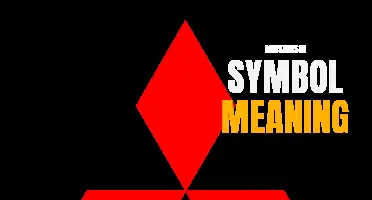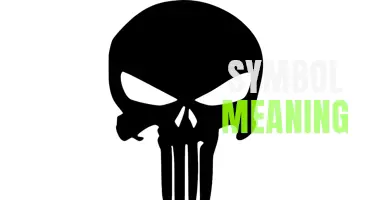
The fascinating world of Dutch symbols and their meanings has been revered through the centuries. From windmills to tulips, clogs to canals, the Netherlands is filled with rich cultural symbols that tell stories of history, tradition, and national pride. These symbols not only serve as iconic representations of Dutch identity, but also offer a deeper understanding of the country's values, beliefs, and heritage. So let's dive into the enchanting realm of Dutch symbolism and discover the captivating meanings behind these enduring emblems.
What You'll Learn
- What are some symbols commonly associated with Dutch culture and what do they represent?
- Are there any specific colors or patterns that are commonly used in Dutch symbolism?
- How do these symbols and their meanings reflect the history and values of the Netherlands?
- Are there any symbols that are unique to certain regions or cities within the Netherlands?
- How have these symbols and their meanings evolved and changed over time?

What are some symbols commonly associated with Dutch culture and what do they represent?
Dutch culture is rich in symbolism, with various symbols that hold strong meanings and significance. These symbols can be found in different aspects of Dutch life, including art, architecture, and traditions. Here are some symbols commonly associated with Dutch culture and what they represent:
Tulip - The tulip is perhaps the most well-known symbol of the Netherlands. It represents beauty, love, and abundance. Tulips are native to Turkey, but the Dutch became famous for their cultivation and trading of tulips during the 17th century. Today, the Netherlands is still known for its vibrant tulip fields and the annual Tulip Festival, which celebrates the beauty of these flowers.
Windmills - Windmills are iconic symbols of the Dutch landscape. They represent the Dutch ingenuity and their close relationship with the sea. Windmills were historically used for various purposes, such as grinding grain, pumping water, and sawing wood. They played a crucial role in reclaiming land from the sea and turning it into fertile agricultural areas. Today, windmills are mostly used for tourism, but they still symbolize the Dutch tradition of innovation and sustainability.
Clogs - Wooden shoes, known as clogs, are another symbol closely associated with Dutch culture. They represent the country's rural heritage and connection to nature. Clogs were traditionally worn by farmers, fishermen, and craftsmen as protective footwear. They provided insulation, durability, and comfort, especially in wet and muddy conditions. Today, clogs are mostly worn during traditional events and festivals or used as decorative items.
Delft Blue - Delft Blue, also known as Delftware, is a type of blue and white pottery that originated in the city of Delft. It represents the Dutch excellence in craftsmanship and the country's historical ties to Chinese porcelain. Delft Blue pottery is characterized by intricate designs, typically depicting landscapes, flowers, and windmills. It has become a symbol of Dutch heritage and is highly valued as a collector's item.
Bicycles - The Netherlands is famous for its cycling culture, and bicycles are a symbol of this sustainable and healthy mode of transportation. Bicycles represent the Dutch emphasis on environmental consciousness and physical well-being. Cycling is deeply ingrained in Dutch society, with an extensive network of bike paths and infrastructure. Bicycles are not only a practical means of transportation but also a symbol of freedom, accessibility, and community.
Orange - The color orange is closely associated with Dutch culture and national identity. It represents the royal family, known as the House of Orange-Nassau, and the Dutch royal family's dynasty. Orange is also associated with Dutch pride, unity, and patriotism. The color can be seen prominently during national celebrations, such as King's Day and international sporting events, where Dutch supporters wear orange clothing and accessories.
These symbols are just a few examples of the rich cultural heritage of the Netherlands. They reflect the values, traditions, and history of the Dutch people and continue to be celebrated and cherished in modern-day Dutch society.
The Timeless Symbolism and Meanings Behind the Shield Maiden
You may want to see also

Are there any specific colors or patterns that are commonly used in Dutch symbolism?
Dutch symbolism is rich with vibrant colors and striking patterns that hold significant meanings. These symbols are often used in various forms of art, architecture, and cultural traditions. Here, we will explore some of the specific colors and patterns commonly associated with Dutch symbolism.
- Orange: The color orange holds a special place in Dutch symbolism. It is the official color of the Dutch royal family, the House of Orange-Nassau. The color orange represents pride, nationalism, and loyalty to the country. It is particularly prominent during national events like King's Day (Koningsdag) when the Dutch people celebrate their monarch's birthday.
- Blue and White Delftware: Delftware, also known as Delft Blue, is a type of pottery that has become an iconic symbol of Dutch culture. It features intricate blue designs on a white background. These patterns often depict floral motifs, windmills, and Dutch landscapes. Delftware represents the Dutch craftsmanship and the country's rich artistic heritage.
- Tulips: Tulips are another symbol deeply linked to Dutch culture. The Netherlands is famous for its tulip fields, and these flowers have become synonymous with the country. Different colors of tulips hold different meanings. Red tulips symbolize love, while yellow tulips represent sunshine and happiness. These colorful flowers signify Dutch pride and the beauty of nature.
- Windmills: Windmills are an iconic symbol of the Dutch landscape. They have been an important part of Dutch history and culture, serving various purposes such as grinding grain and pumping water. Windmills represent the Dutch architectural ingenuity and their reliance on wind energy. They are often depicted in artwork and are also popular tourist attractions.
- Checkerboard Patterns: Checkerboard patterns are commonly used in Dutch symbolism and can be seen in various forms, including traditional clothing, architecture, and decorative arts. These patterns symbolize order, harmony, and balance. They reflect the meticulous nature and sense of organization that is characteristic of Dutch culture.
- National Flag: The Dutch national flag, commonly known as the "Prinsenvlag" or "Prince's Flag," is a tricolor of red, white, and blue. The colors red, white, and blue are also found in several flags of Dutch provinces and cities. These colors symbolize unity, liberty, and independence.
In Dutch symbolism, colors and patterns are essential tools for expressing cultural identity and conveying meaningful messages. The vibrant colors and intricate patterns found in Dutch art and traditions add depth and symbolism to the country's rich cultural heritage. Through these symbols, the Dutch people celebrate their history, traditions, and national identity.
The Significance of the Number 9: Unveiling Its Symbolic Meaning
You may want to see also

How do these symbols and their meanings reflect the history and values of the Netherlands?
The symbols and their meanings in the Netherlands reflect the rich history and values of the country. From the national flag to the national flower, each symbol holds a significant place in the hearts of Dutch people and represents their heritage and identity.
One of the most prominent symbols of the Netherlands is the national flag. Known as the "Prinsenvlag" or the "Prince's Flag," it consists of three horizontal stripes of red, white, and blue. The red stripe represents the courage and determination of the Dutch people, while the white represents purity and honesty. The blue stripe symbolizes loyalty and the connection to the sea. The flag has its roots in the Dutch struggle for independence against Spanish rule in the 16th century and has since become a symbol of Dutch unity and national pride.
Another symbol that reflects the history of the Netherlands is the windmill. These iconic structures have been a part of the Dutch landscape for centuries and serve as a reminder of the country's agricultural and industrial heritage. Windmills were traditionally used for various purposes such as grinding grain, pumping water, and sawing timber. They symbolize the Dutch ingenuity and their ability to harness the power of the wind to improve their lives. Windmills are also seen as a symbol of sustainability and environmental consciousness, as they are known for their energy-efficient operation.
Tulips are another symbol closely associated with the Netherlands. These vibrant and colorful flowers are not native to the country but were introduced from the Ottoman Empire in the 16th century. Tulips quickly became popular and have since become a symbol of the Netherlands' rich horticultural tradition. The Netherlands is known for its tulip fields and the annual tulip festivals held in various parts of the country. Tulips represent beauty, vibrancy, and the Dutch love for nature and gardening.
The lion is yet another significant symbol in the Netherlands' history. The lion has been used as a symbol of power and strength throughout history, and the Dutch coat of arms features a rampant lion. This symbolizes the Netherlands' strength and independence. The lion is often associated with royalty, and it reflects the Netherlands' historical ties to the House of Orange-Nassau, which has played a significant role in the country's history.
Overall, these symbols and their meanings reflect the history and values of the Netherlands. They represent the country's struggle for independence, its agricultural and industrial heritage, its love for nature and beauty, and its strength and unity. These symbols are not only important national emblems but also serve as a source of pride for the Dutch people, reminding them of their shared history and the values they hold dear.
Understanding the Meaning of the Lock Symbol on Text Messages
You may want to see also

Are there any symbols that are unique to certain regions or cities within the Netherlands?
Symbols play an important role in representing the identity and culture of a region or city. In the Netherlands, there are several symbols that are unique and representative of certain regions or cities. These symbols hold historical significance and are often used to promote tourism and celebrate local heritage.
One such symbol is the Windmill, which is closely associated with the Dutch countryside. These iconic structures can be found throughout the Netherlands, but they are particularly prevalent in the provinces of North Holland and South Holland. The windmill symbolizes the Dutch commitment to harnessing the power of wind and is considered a cultural treasure. Visitors to these regions can often visit working windmills that offer insights into traditional Dutch industries such as grinding grain and pumping water. The Kinderdijk area in South Holland is especially famous for its collection of 19 windmills, which have been recognized as a UNESCO World Heritage Site.
Another symbol unique to a specific region in the Netherlands is the Frisian flag. The Frisian region, located in the northern part of the country, has its own distinctive flag that is recognized throughout the Netherlands. The flag consists of seven blue and white stripes, with each stripe representing one of the seven historical Frisian regions. The Frisian flag is used to celebrate and promote the cultural heritage of the Frisian people, who have their own language and customs.
In addition to these regional symbols, there are also symbols associated with specific cities within the Netherlands. For example, the tulip is closely associated with the city of Amsterdam. This flower has been cultivated in the Netherlands for centuries and has become a national symbol. Amsterdam is known for its vibrant tulip market, where visitors can purchase tulip bulbs and learn about the history and significance of this iconic flower.
Another symbol associated with a specific city is the Maastricht Treaty, which is closely associated with the city of Maastricht. This treaty, signed in 1992, established the European Union and laid the foundation for the euro currency. The city of Maastricht is proud of its role in European integration and often promotes itself as the birthplace of the European Union.
In conclusion, the Netherlands has several symbols that are unique to certain regions or cities. These symbols represent the cultural identity of the region or city and are often used to promote tourism and celebrate local heritage. From windmills and tulips to flags and treaties, these symbols play an important role in the history and identity of the Netherlands.
Decoding the Symbolism: Exploring the Meaning Behind Linkedin Symbols
You may want to see also

How have these symbols and their meanings evolved and changed over time?
Symbols have always played a significant role in human communication and understanding. They have the power to convey complex ideas and emotions, transcending language barriers and cultural differences. However, the meanings attached to these symbols have evolved and changed over time, influenced by various factors such as cultural shifts, historical events, and advancements in communication technology.
One prime example of evolving symbols is the smiley face. What started as a simple representation of happiness and contentment has transformed into a universal symbol for positivity and friendliness. Originally created by Harvey Ball in 1963 to boost employee morale, the smiley face gained widespread recognition in the 1970s when it was adopted by popular culture, appearing on various merchandise and clothing. With the advent of internet messaging and social media, the smiley face became an essential part of digital communication, often used to express humor, sarcasm, or to soften the impact of a message.
Another symbol that has gone through significant changes is the peace sign. Initially associated with the anti-nuclear movement in the 1960s, the peace sign was a powerful symbol of unity, love, and resistance against war. Over time, however, its meaning has expanded to encompass a broader range of social causes and movements advocating for peace and justice. It has become a symbol of solidarity and a call for equality in various contexts, highlighting the evolving nature of its significance.
Religious symbols have also experienced transformations throughout history. The significance of crosses, for instance, has evolved depending on the cultural and historical context. In Christianity, the cross symbolizes the crucifixion and resurrection of Jesus Christ, representing salvation and the ultimate sacrifice. However, the meaning of the cross can differ among different sects and branches of Christianity. Additionally, the cross has been adapted and reinterpreted by other religions and cultures, sometimes encompassing different connotations and associations.
Similarly, the symbol of a crescent moon and star has various meanings across different cultures and religions. In Islam, it represents the faith and is closely associated with the religion. However, it is also used as a symbol in other contexts and cultures, such as representing the night, dreams, or even femininity.
Technological advancements have also led to the emergence of new symbols and altered their meanings. For example, the hashtag symbol (#) was once predominantly used to indicate a number or a pound sign. However, with the rise of social media platforms like Twitter and Instagram, the hashtag has become a way to categorize and search for specific topics or trends. It has evolved into a powerful tool for activism, raising awareness, and promoting social causes.
In conclusion, symbols and their meanings are not static but instead change and evolve over time. Cultural shifts, historical events, and advancements in technology all contribute to these changes. As society progresses and new ideas emerge, symbols adapt to reflect the evolving values and beliefs of a community. Understanding the evolution of symbols is essential in comprehending the complexities of human communication and the ever-changing nature of our collective understanding.
Decoding the Green Car Light Symbol: What Does it Mean?
You may want to see also
Frequently asked questions
The windmill is a significant symbol in Dutch culture as it represents the country's historical reliance on wind power for various industries such as grinding grain, sawing timber, and draining land. Additionally, windmills are seen as a symbol of Dutch engineering and innovation.
Tulips hold great significance in Dutch culture and are often associated with the Netherlands. In the 17th century, tulips were highly sought after and prices soared to extreme levels during the "tulip mania" period. Today, tulips are seen as a symbol of Dutch heritage and are widely cultivated, especially in the famous Keukenhof Gardens.
The Dutch lion, also known as the "lion rampant," is an iconic symbol of the Netherlands. The lion represents courage, strength, and independence, reflecting the Dutch people's resilient nature. The lion is often depicted holding a sword and arrows, representing the nation's readiness to defend itself.
The color orange has deep historical and cultural significance in Dutch culture. It is associated with the Dutch royal family, the House of Orange-Nassau. The Dutch royal family played a pivotal role in the country's history, leading to the establishment of the Dutch Republic and the eventual independence of the Netherlands. As a result, orange became the national color, and it is particularly prominent during national events and celebrations, such as King's Day.







